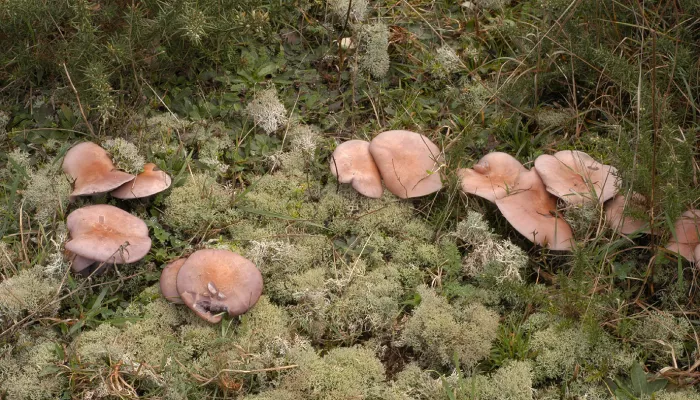| Statistics | |
|---|---|
| Cap diameter: | 6cm - 12cm |
| Stem height: | 5cm - 9cm |
The lilac-blue wood blewit grows in woodland and parkland. It is edible and gathering wild food can be fun, but it's best to do it with an expert - pop along to a Wildlife Trust event to try it.
About
The wood blewit is an attractive, lilac fungus that grows in broadleaved and coniferous woodland, and parkland. It is common in autumn and winter. It is edible, but is similar in appearance to the Bruising Webcap, which is not; indeed, never pick and eat fungi that can you cannot positively identify. Fungi belong to their own kingdom and get their nutrients and energy from organic matter, rather than photosynthesis like plants. It is often just the fruiting bodies, or 'mushrooms', that are visible to us, arising from an unseen network of tiny filaments called 'hyphae'. These fruiting bodies produce spores for reproduction, although fungi can also reproduce asexually by fragmentation.
How to identify
The wood blewit displays a smooth, lilac-blue cap that turns brownish with age. It starts off convex, but gradually becomes wavy or depressed. The stem is bluish-lilac and covered with small fibres, and the gills are lilac, fading to buff, and attached at the stem. This fungus smells fruity and perfumed.
Did you know?
The field blewit, Lepista saeva, is a less common species, but is very similar in appearance to the wood blewit; it lacks the violet tinge to the cap, however.
How people can help
Gathering wild food can be a satisfying experience and provides a chance to learn about our native plants and fungi. However, if you do fancy giving it a go, remember that it is an offence to totally uproot a wild plant and please just take what you need, leaving some for the wild creatures, too. Don't eat anything you can't identify, either - it could make you very ill. To find out more about wild plants and fungi, both edible and not, why not come along to a Wildlife Trust event? From fungi forays to woodland walks, there's plenty of opportunities to learn more about your local patch.

